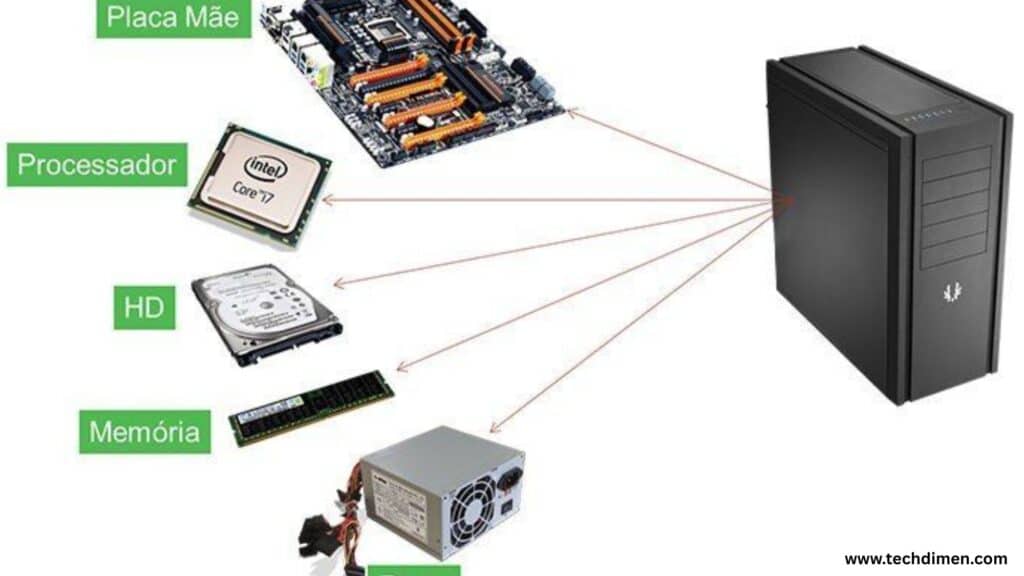Technology portfolio management stands at the heart of every successful enterprise’s digital strategy. With rapid advancements and increasing complexity, companies must optimize their IT assets, align investments with business goals, and ensure governance is airtight. This article dives deep into technology portfolio management, breaking down its core components, strategic importance, and real-world application. Along the way, you’ll find actionable insights for tech investment planning, IT governance, and how to keep your portfolio agile in 2025 and beyond.
What Is Technology Portfolio Management?
Technology portfolio management involves overseeing all IT assets, software, infrastructure, and applications a business uses, with the goal of optimizing value, controlling risks, and supporting strategic objectives. Unlike managing individual projects or tools, this approach views technology as a collective portfolio similar to financial assets that requires balancing, prioritization, and continuous assessment.
This management practice encompasses application portfolio management, infrastructure portfolio management, and ongoing evaluation of the tech portfolio lifecycle. The focus is not only on what technology exists but also on how it performs and evolves over time. Effective management improves ROI on IT projects, enables tech investment optimization, and supports enterprise IT governance frameworks.
Why Technology Portfolio Management Matters for Modern Enterprises
In today’s fast moving digital landscape, enterprises face increasing pressure to innovate while managing costs and risks. Without a clear IT portfolio strategy, companies risk overspending on redundant technologies, accumulating technical debt, or missing opportunities for digital transformation.
Strong technology portfolio management helps businesses align IT spending with corporate goals, foster innovation pipelines, and provide transparency in IT investments. Moreover, it enables firms to conduct rigorous IT portfolio risk assessments, prioritize initiatives based on value and risk, and maintain compliance with regulatory governance standards.
Studies show that organizations with mature portfolio governance often reduce IT costs by 20-30%, accelerate delivery of strategic tech initiatives, and improve decision-making through real-time IT portfolio dashboards and analytics tools.
Key Components of a High-Performing Tech Portfolio

A well rounded technology portfolio consists of several essential components. First, distinguishing between the application portfolio and the infrastructure portfolio is critical. The application portfolio includes software solutions that drive business processes, whereas infrastructure covers hardware, networks, cloud environments, and foundational services.
Next, performing risk and value assessments ensures that each technology asset aligns with risk tolerance and business value. This process helps in portfolio rationalization, which involves decommissioning legacy systems and consolidating platforms to cut costs and improve performance.
Lifecycle management plays a crucial role, covering the acquisition, deployment, operation, and retirement phases of technology assets. An effective tech portfolio lifecycle strategy considers total technology lifecycle costs, balancing innovation with stability.
Finally, compliance and governance form the backbone of the portfolio. An IT governance framework ensures policies, standards, and controls are in place, supporting security portfolio analysis, regulatory compliance, and risk mitigation.
How to Build a Scalable Technology Portfolio Strategy
Building a scalable tech portfolio strategy begins with defining clear business priorities and desired outcomes. Engaging key stakeholders early and continuously is vital to align technology decisions with company objectives.
Next, developing an IT investment framework helps guide decisions on where to allocate resources. This framework integrates cost-benefit analysis, risk-based prioritization, and business-IT alignment principles to maximize returns.
Balancing innovation with risk control requires flexible planning that supports agile development, continuous delivery, and experimentation, all while monitoring IT portfolio KPIs such as project delivery times, cost savings, and asset utilization rates.
Establishing measurable KPIs empowers organizations to track portfolio health, spot performance bottlenecks, and optimize the tech investment pipeline dynamically.
Top Tools and Software for Managing Your IT Portfolio

In 2025, the market offers a broad array of portfolio management platforms designed to streamline IT asset management and improve decision making. Leading solutions provide integrated dashboards real time analytics and support for cloud portfolio management alongside on premises assets.
Choosing between SaaS and on-premise tools depends on factors like security needs, scalability, and integration with existing ITSM and DevOps platforms. Many organizations favor SaaS for faster deployment and continuous updates, but some highly regulated industries prefer on-premise setups.
Modern tools enable portfolio heatmap analysis, project dependency mapping, and predictive analytics, which drive more informed prioritization. Visualizations such as Gantt charts, resource allocation models, and scorecards help teams communicate portfolio status across stakeholders.
Common Pitfalls in Tech Portfolio Management (And How to Avoid Them)
Despite its benefits, technology portfolio management often faces challenges. One common pitfall is poor data quality, which undermines IT asset valuation and technology audit efforts. Without accurate, up-to-date information, decisions risk being based on incomplete or misleading insights.
Another frequent issue is lack of stakeholder engagement, which can cause misalignment between IT and business units. Ensuring continuous communication and involving all relevant parties in governance boards prevents siloed decision making.
Overemphasizing short term cost savings without considering long term value also leads to suboptimal portfolios. Avoid this by incorporating value-based prioritization and strategic planning focused on sustained business benefits.
How to Align IT Portfolio Decisions With Business Goals
Aligning your IT portfolio with business goals requires a holistic view that bridges technology and strategy. This means regularly updating your technology roadmap planning to reflect evolving market conditions and corporate priorities.
Adopting frameworks that emphasize business case assessment and benefit realization helps validate investments. Tools that support portfolio analytics provide visibility into which projects contribute most to business outcomes.
Using techniques such as value stream mapping and stakeholder matrix analysis deepens understanding of how IT initiatives impact operational efficiency and customer experience. Ultimately, alignment ensures that every technology dollar spent drives measurable business growth.
In this World Examples of Successful Portfolio Management

Fortune 500 companies often lead in technology portfolio management excellence. For example, a major enterprise IT overhaul involved a comprehensive portfolio rationalization that decommissioned 40% of legacy applications. This resulted in a 25% reduction in annual IT spend and accelerated digital transformation efforts.
Conversely, some mid-sized companies face setbacks when attempting portfolio optimization without mature governance. Lessons learned include the importance of phased rollouts and continuous training to prevent resistance and technical debt.
These cases underscore how IT maturity assessments and ongoing portfolio reviews ensure adaptation and sustained success.
Technology Portfolio Management
| Category | Focus | Actions | Tools |
|---|---|---|---|
| Setup | List and group assets | Inventory, classify | Asset trackers |
| Strategy | Align with business goals | Prioritize, plan | Roadmapping tools |
| Risk & Value | Evaluate risks and ROI | Analyze, calculate | Risk and financial tools |
| Governance | Compliance and policies | Audit, enforce | Compliance software |
| Performance | Track progress | Monitor KPIs, review | BI and analytics tools |
| Resources | Budget and staff | Allocate, plan capacity | Resource management |
| Lifecycle | Manage tech lifespan | Upgrade, retire | Lifecycle tools |
| Optimization | Cut costs, improve flow | Consolidate, trim | Cost and portfolio tools |
| Innovation | Adopt new tech | Pilot, innovate | Agile and innovation tools |
FAQs
What is Technology Portfolio Management?
Technology Portfolio Management (TPM) is a strategic process used by organizations to monitor, evaluate, and manage all their technology assets. This includes software, hardware, platforms, and IT projects. The aim is to ensure each technology investment supports the company’s business goals while delivering the best possible value.
Why is Technology Portfolio Management important?
TPM helps organizations make smarter technology decisions. It reduces waste, eliminates redundancies, and ensures that every piece of tech is aligned with the company’s direction. With a clear portfolio strategy, businesses can cut costs, increase efficiency, and stay agile in a fast-changing digital landscape.
How is TPM different from IT Asset Management?
While both involve managing technology, the focus is different. IT Asset Management tracks physical and digital IT items like licenses, servers, and devices. TPM, however, takes a broader and more strategic view. It looks at the business value, performance, risk, and future potential of all tech investments.
What does a typical technology portfolio include?
A technology portfolio usually contains a mix of software applications, digital platforms, cloud services, on-premise systems, cybersecurity tools, and ongoing IT projects. It may also include emerging technologies like artificial intelligence, blockchain, or IoT, depending on the organization’s innovation strategy.
Which tools are used for Technology Portfolio Management?
Popular tools for TPM include ServiceNow, LeanIX, Apptio, and Planview. These platforms provide dashboards, data insights, and automation features that help teams track performance, assess costs, and make data-driven decisions across the tech portfolio.
How does TPM support digital transformation?
TPM plays a key role in driving digital transformation. It helps organizations identify outdated or underperforming technologies and replace them with more effective, scalable solutions. By aligning technology upgrades with business goals, TPM ensures that transformation efforts are focused and sustainable.
Who manages the technology portfolio?
Managing the tech portfolio is often a shared responsibility. Chief Information Officers (CIOs), IT portfolio managers, enterprise architects, and finance leaders usually work together. Their combined expertise ensures technology decisions are both technically sound and financially responsible.
What are the key metrics used in TPM?
Organizations use several metrics to evaluate their technology portfolio. These include total cost of ownership (TCO), return on investment (ROI), risk ratings, lifecycle status, and overall business impact. These indicators help prioritize technologies for investment, improvement, or retirement.
How often should the tech portfolio be reviewed?
Technology portfolios should be reviewed regularly typically on a quarterly basis. However, fast paced industries or businesses undergoing major changes may benefit from more frequent reviews to stay ahead of trends and avoid potential risks.
Can Technology Portfolio Management help reduce technical debt?
Absolutely. TPM is a powerful tool for identifying legacy systems, unused tools, or overlapping technologies that contribute to technical debt. By cleaning up and consolidating these elements, organizations can boost performance and free up resources for innovation.
Conclusion
Technology portfolio management is no longer optional for enterprises aiming to thrive in 2025’s digital economy. It provides a structured approach to tech investment planning, risk mitigation, and value optimization. By leveraging robust governance, smart tools, and strategic alignment, companies can unlock significant competitive advantages.
For businesses looking to sharpen their IT portfolio strategy, focusing on lifecycle management, portfolio governance, and continuous improvement is key. Investing the time and resources into building a resilient technology portfolio will pay dividends in agility, cost savings, and innovation capacity.

Jhon AJS is a tech enthusiast and author at Tech Dimen, where he explores the latest trends in technology and TV dimensions. With a passion for simplifying complex topics, Jhon aims to make tech accessible and engaging for readers of all levels.







